Garrett Pro Pointer AT vs. Fisher F-Pulse: Which One To Choose? (Comparing Specs, Thoughts, Durability ++)
Metal detecting enthusiasts often find themselves faced with the decision of choosing the right pinpointer to accompany them on their treasure-hunting adventures. Two popular contenders in the market are the Garrett Pro Pointer AT and the Fisher F-Pulse. I’ve had them both over a longer period and have much experience with both.
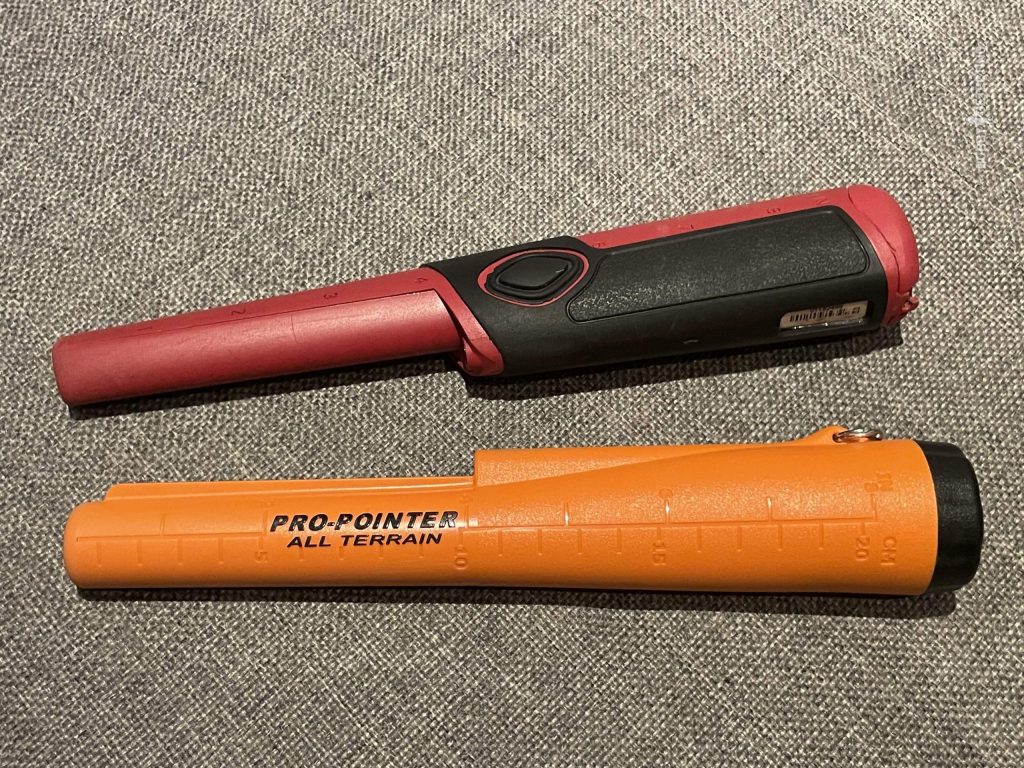
In this comparison, we’ll first look at the factory specifications and share personal experiences with both pinpointers, addressing factors like performance, features, and durability. Then I’ll go on to describe my own experiences with these fantastic detecting machines.
Factory Specifications
Let us first look at the factory specifications for both and then discuss these!
Factory specifications are retrieved from the manufacturer’s sites
Garrett Pro Pointer AT:
Operating Temperatures: -35ºF/-37ºC to 158ºF/70ºC
Operating Frequency: 11.5 kHz
Waterproof Rating: 20 foot (6 meters) maximum depth; IP 68
Length: 9”/22.9 cm
Built-in LED Flashlight Yes
Lost Pinpointer Alarm: Yes
Weight: 0.2 kg
Battery: Single 9V
Battery Life:
Alkaline: 30 hours
Rechargeable: 8 hours
Carbon: 16 hours
Fisher F-Pulse:
Temperature range: 5ºF/-15ºC to 158ºF/70ºC
Technology: Pulse Induction, bipolar, fully static with 2500pps, sample delay: 15us
Waterproof: 6 feet (1.8m) for 1 hour; IP68
Length: 9.5”/24 cm
Built-in LED Flashlight: Yes
Lost Pinpointer Alarm: Yes
Modes: 3 sensitivity settings, 20 LED settings
Weight: 0.2 kg
Batteries: 2x AA
Battery life:
Alkaline 25 hours
NiMH rechargeable 15 hours
Lithium 50 hours
At first glance, they both look somewhat similar, but let’s dive into a detailed comparison of their specifications to help you make an informed decision.
Operating Temperatures:
– Garrett Pro Pointer AT: -35ºF/-37ºC to 158ºF/70ºC
– Fisher F-Pulse: 5ºF/-15ºC to 158ºF/70ºC
The Garrett Pro Pointer AT takes the lead with an impressive operating temperature range, making it suitable for a broader spectrum of environments, including extremely cold conditions, such as up here in the north.
Operating Frequency:
– Garrett Pro Pointer AT: 11.5 kHz
– Fisher F-Pulse: Pulse Induction, bipolar, fully static with 2500pps
The Garrett Pro Pointer AT operates at a fixed frequency of 11.5 kHz, providing a balance between sensitivity and target detection. In contrast, the Fisher F-Pulse employs pulse induction technology, enhancing its ability to detect targets in various soil conditions. The technology of the Fisher is quite impressive here, and thus the Fisher takes the lead in this category.
Waterproof Rating:
– Garrett Pro Pointer AT: 20 feet (6 meters) maximum depth; IP 68
– Fisher F-Pulse: 6 feet (1.8 meters) for 1 hour; IP68
The Garrett Pro Pointer AT takes the lead here with a remarkable waterproof rating of up to 20 feet, making it ideal for metal detecting in more wet environments. The Fisher F-Pulse, though waterproof, is better suited for drier environments.
Length and weight:
– Garrett Pro Pointer AT: 9”/22.9 cm and 0.2 kg
– Fisher F-Pulse: 9.5”/24 cm and 0.2 kg
Both pinpointers share a similar length and weight, providing a comfortable and ergonomic design for users during extended use.
Features:
Both models come equipped with a built-in LED flashlight, enhancing visibility in low-light conditions and adding convenience to your metal-detecting adventures. Both pinpointers also feature a lost pinpointer alarm, a valuable addition to prevent accidentally leaving your tool behind during a dig. The Fisher also has adjustable flashlight settings with 20 different LED options and modes for vibration only/sound only/sound and vibration. The Garrett has a non-adjustable LED flashlight, and the modes are vibration only/sound and vibration. I would say the Fisher wins this category!
Battery life:
– Garrett Pro Pointer AT batteries: Single 9V
– Alkaline: 30 hours
– Rechargeable: 8 hours
– Carbon: 16 hours
– Fisher F-Pulse batteries: 2x AA
– Alkaline: 25 hours
– NiMH rechargeable: 15 hours
– Lithium: 50 hours
While the Garrett Pro Pointer AT utilizes a single 9V battery, the Fisher F-Pulse opts for the more common 2x AA batteries. This can be a crucial factor depending on your preference and the availability of battery types in your area. The Fisher F-Pulse showcases impressive battery life, particularly with lithium batteries, offering up to 50 hours of continuous use compared to the Garrett Pro Pointer AT’s maximum of 30 hours with alkaline batteries. However, the Garrett has /slightly better alkaline battery life. The Fisher has to take the lead in this category, as AA batteries are much more common and easily available, at least here in Europe.
Personal Experience and Thoughts
Performance and Sensitivity:
Both pinpointers excel in sensitivity, crucial for locating small or deeply buried objects. The Garrett Pro Pointer AT, with its fixed frequency, provides reliable performance at 11.5 kHz. On the other hand, the Fisher F-Pulse’s technology has a slight overhand here, and this is noticeable when detecting. The Fisher provides a better sensitivity and a greater depth. Both pinpointers have the 360-degree detection tip, and this is great and a must-have feature for pinpointers.
Practicality:
Removing and installing the battery is more practical for the Garrett pinpointer as you have to have some tool or something to do it on the Fisher. However, it is quite convenient and cheaper to replace the two AA batteries in the Fisher.
Waterproof Capability and Durability:
The Garrett Pro Pointer AT boasts superior waterproofing, allowing it to be submerged up to 10 feet underwater. This makes it an ideal choice for beach hunting or wading in shallow waters. The Fisher F-Pulse, while waterproof up to 6 feet, may be better suited for land-based treasure hunting. My personal experience is that the Fisher doesn’t hold up quite as well in wet environments, which can be seen in my post about repairing the Fisher F-Pulse here due to water damage. Both pinpointers feature rugged designs that can withstand the rigors of regular use. The Garrett Pro Pointer AT, known for its robust build, has proven to be exceptionally durable in various environments for me personally. The Fisher F-Pulse, though slightly lighter, is no slouch in durability and handles typical field conditions with ease. However, the lanyard hook on my Fisher broke during normal usage, and the Garrett’s one feels more robust.
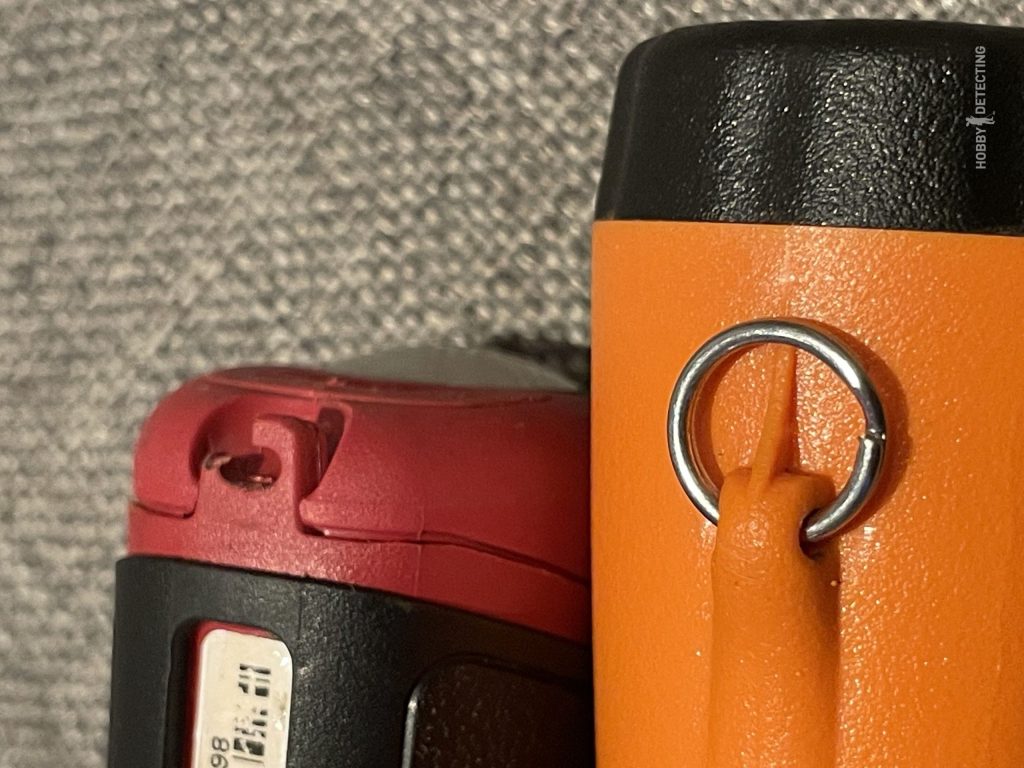
Nice-to-have Features:
Both pinpointers share user-friendly features such as built-in LED flashlights for low-light conditions and lost pinpointer alarms, ensuring you won’t inadvertently leave your valuable tool behind. The Fisher F-Pulse, with its adjustable vibration and LED, offers an added layer of customization for users seeking a tailored experience. For me personally, the option to turn off vibration and reduce the LED strength is a great feature as it helps the pinpointer save battery when these features are not needed.
Design and feel:
The designs on both pinpointers have similarities, but at the same time, they are quite different.

The Garrett’s round design fits better in the pinpointer holster, but the Fisher’s design feels better in the hand when holding it. Both also have a ruler on the side of the pinpointer in both CM and inches.
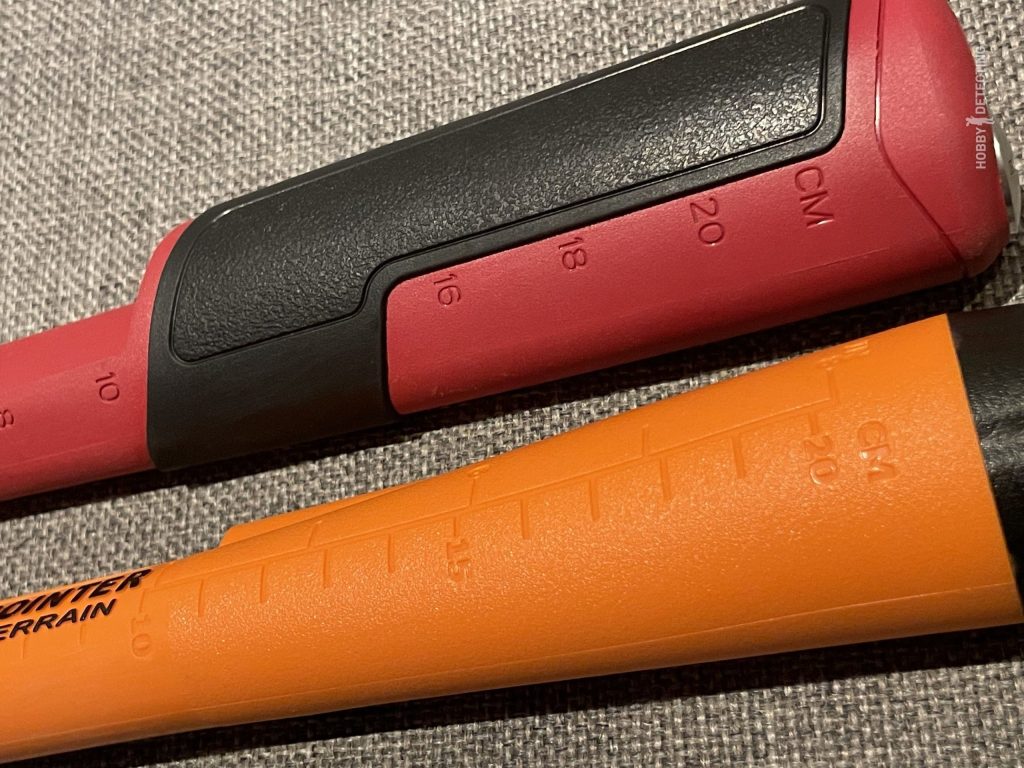
Conclusion
In the context of metal detecting, the choice between the Garrett Pro Pointer AT and the Fisher F-Pulse ultimately depends on individual preferences and specific hunting conditions. The Garrett Pro Pointer AT excels in deeper water submersion scenarios and durability, while the Fisher F-Pulse offers more customization options. Both pinpointers deliver exceptional performance, and personal preferences will play a significant role in determining the better fit for your metal-detecting adventures. Regardless of your choice, rest assured that both the Garrett Pro Pointer AT and Fisher F-Pulse have been excellent and reliable companions for me in my metal detecting trips, and both pinpointers have their strengths. The Garrett Pro Pointer AT excels in extreme operating temperatures and tough environments, making it a go-to choice for versatile detecting. On the other hand, the Fisher F-Pulse’s pulse induction technology and longer battery life make it a solid contender for those seeking enhanced detection capabilities and extended use.
In short, the Garrett seems to be more robust and universal, while the Fisher provides a more advanced detecting experience with greater depth. Both pinpointers are in approximately the same price category, and for my part I’m happy I have both and I intend to keep them! Your choice between these two amazing pinpointers will depend on your specific preferences, and I now hope you’ll be able to make the correct choice. I hope my comparison and personal insights were helpful and interesting! Happy detecting!
P.S. Want to see a comparison between the depth of these two pinpointers? Stay tuned!
As usual, I’ll be very happy if you leave a comment below with your thoughts or wishes for future articles, and if there are any questions do not hesitate to fire away in the comment section!

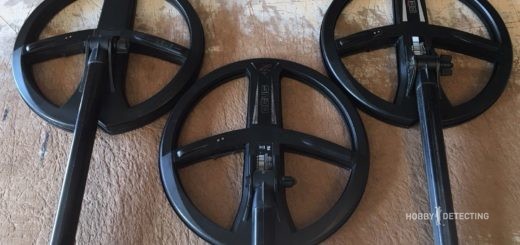

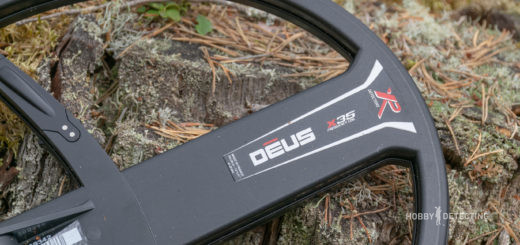





Thanks for the review! Which one is best for detecting gold?
In my opinion the Fisher F-Pulse is more sensitive to small objects and would thus be best for detecting gold. Good luck in your hunt for treasure!
I use them both …Fisher set for max depth and Garrett when I am near to find target. .so two stages pinpointing…not need always but find faster to check in that way when doing pinpointing end results are faster for me.